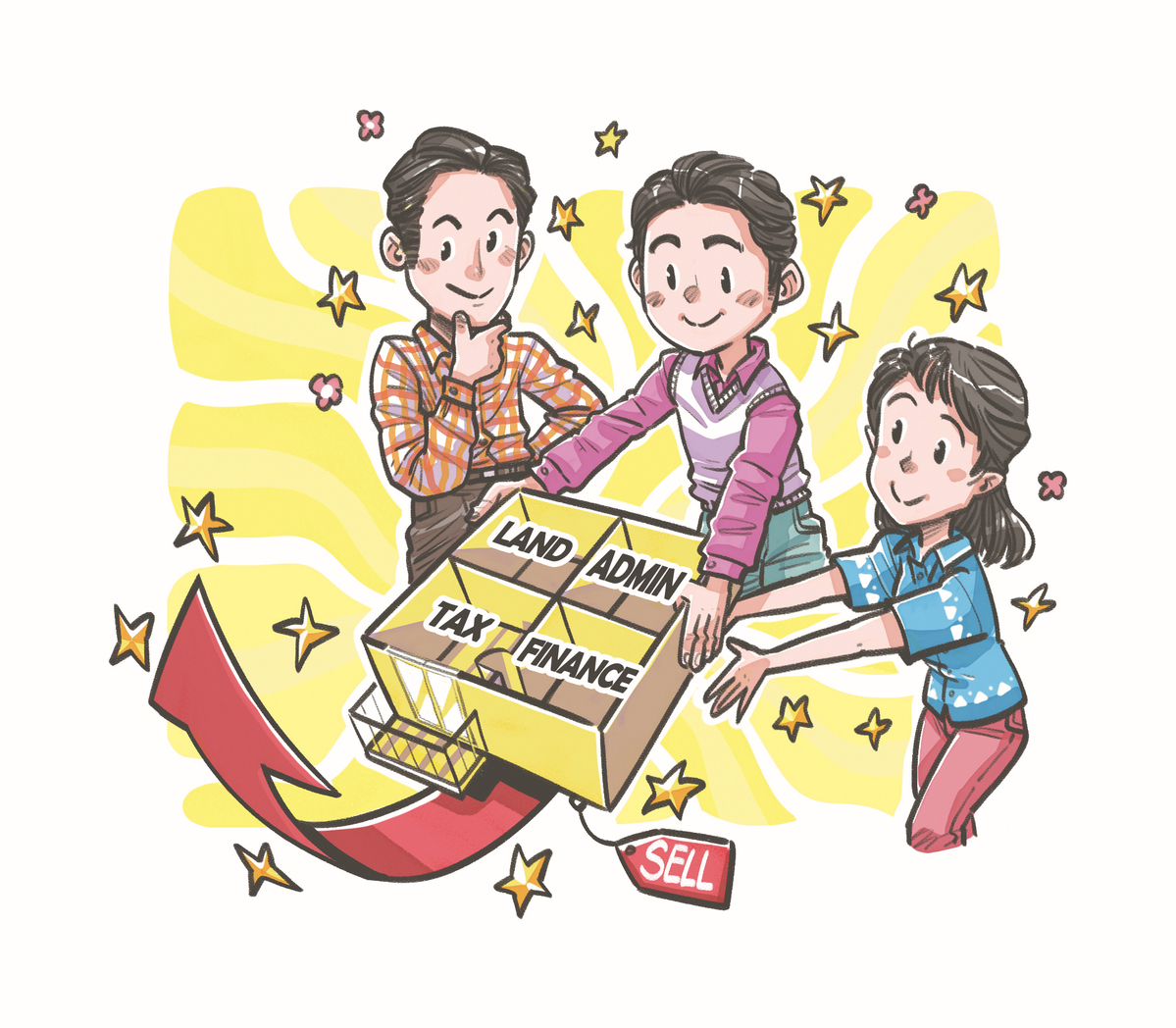Realty policy change afoot in finance, land, taxation, admin


While sticking to principles including "housing is for living in, not for speculation", there will be some adjustments made to real estate regulations, and optimization of financial policies should be comprehensive.
The direction of property sector regulation in the years to come will be steadfast, which can be summed up as mainly abiding by the principle of housing is for living in instead of speculation, attaching equal importance to property leasing and purchasing, stabilizing land and home prices, and market expectations, as well as enabling people to have better livelihoods.
There will also be certain changes made to current regulations and policies in the real estate sector covering finance, land, taxation and administration. Specifically, financial policies are set to maintain certain bottom-line standards and prevent risks; land policies should strike a balance between buyers, tenants, land and property; fiscal initiatives should focus on raising taxes on actual property owners; and administrative policies should include purchase restrictions, limitations on loans, price caps, sales curbs, and other stabilizing measures.
Financial regulations taken in the past few years have been effective. In 2016, real estate-related lending accounted for 44.8 percent of the nation's total loans for the year. This figure, however, shrank to 18 percent as of the end of September, which was the level seen in 2012.
Expectations of further policy tightening are comparatively low. Instead, future policies will likely adhere to existing measures, consolidating recent achievements and maintaining the current direction.
More specifically, down payments and interest rates for first-time homebuyers will remain stable, but speculative activities will be more widely discouraged. Property developers' debt will come under stricter control, and property loans will be better managed.
In addition, to optimize financial policies, the following methodologies are suggested.
First, all mortgages owned by real estate developers from operational projects should be excluded from their debt limitations, and related loans should not be included in collectively managed assets of commercial banks. Thus, real estate companies' rational cash flow from financing can be ensured.
Second, the operational assets of commercial and office properties will be allowed to issue public REITs (real estate investment trusts).Therefore, such assets can be activated, consumption can be stimulated and enterprises will thus experience operational cash flow in a normalized way.
Third, policies will support boosting demand, encouraging product innovation and providing mortgages and loans in a timely manner.
All in all, property developers in the future should adopt the strategy of stable and progressive growth. This is not only the keynote policy of the nation, but also part and parcel of the nature of real estate enterprises in terms of future development.
As the market enters its next phase, market demand will gradually stabilize in the 14th Five-Year Plan period (2021-25), but home-buying demand related to improving living conditions will continue to rise.
Real estate enterprises should be prepared for a possible slowdown in sales over the mid to long-term. Against such a backdrop, there are several things property developers could do, including paying attention to quality improvement and product innovation, positioning themselves properly, having their development pace carefully calibrated, constantly optimizing products, creating new demand and satisfying consumer demand through transformation and upgrade.
The year 2021 was very unique. In the first 10 months, residential property sales volume, sales revenue, property construction space and real estate investment all hit historic highs. This is in stark contrast with that of the previous year, when the sector was heavily impacted by the pandemic.
Last year's performance is regarded as extremely unique because the first half saw large year-on-year and month-on-month rises in both supply and sales, while the second half witnessed pullbacks.
Conventionally, the year-on-year changes in supply, or property development investment and new construction area, lag about three to six months behind overall sales performance.
It is rare to see property supply and sales perform in the same trajectory simultaneously. This is due to the cautious real estate finance management climate as well as the credit crisis triggered by credit defaults of some leading realty giants.
The tightening of capital from both the supply and demand perspectives has transformed the property sector's previous development model. A high leverage and high turnover development model has been formed over the past two decades.
The real estate industry is capital intensive. Property enterprises used to expand via high leverage, high debt and high turnover. Such a development model contains certain risks throughout its transformation. And restricted execution of financial policies puts quite a lot pressure on real estate companies' financing.
In fact, because of tighter capital, the percentage of newly issued real estate loans continued to drop from 2019, and the amount decreased by 1.39 trillion yuan ($218.5 billion) in the third quarter of 2021 alone from the same period of 2020. Starting from July, home mortgages tightened up, loan application procedures were extended and some regions even raised their personal mortgage interest rates. In the meantime, real estate developers found that some of their projects could not attain loans since the beginning of July.
Generally speaking, policies are heading in the right direction, though with exceptions amid implementation, which may create operational risks for enterprises. Central bank officials' speeches made between late September and October demonstrated that active adjustments are taking place. The measures will gradually unleash the reasonable loan volume that accumulated previously.
But it may take some time for the policy amendments to take effect and further restore the market.
Chinese real estate enterprises can be divided into four categories according to their risk levels-developers undergoing transformation and investment diversification; companies financing at high interest rates and purchasing land plots at inflated costs; corporations operating with stable capital flow; and developers with low liability ratios.
Companies that fall into the latter two categories will benefit more from the policy adjustments, and their stable development is expected once normal financing resumes.
Objectively speaking, enterprises are still under huge pressure because the market has yet to fully recover.
We are going to see the four types of property enterprises develop in differentiated patterns in the future.
The writer is a senior researcher at the National Academy of Development and Strategy, Renmin University of China; a key member of the China Macroeconomic Forum; and former director of the Center for Policy Research under the Ministry of Housing and Urban-Rural Development.
The views don't necessarily reflect those of China Daily.




































